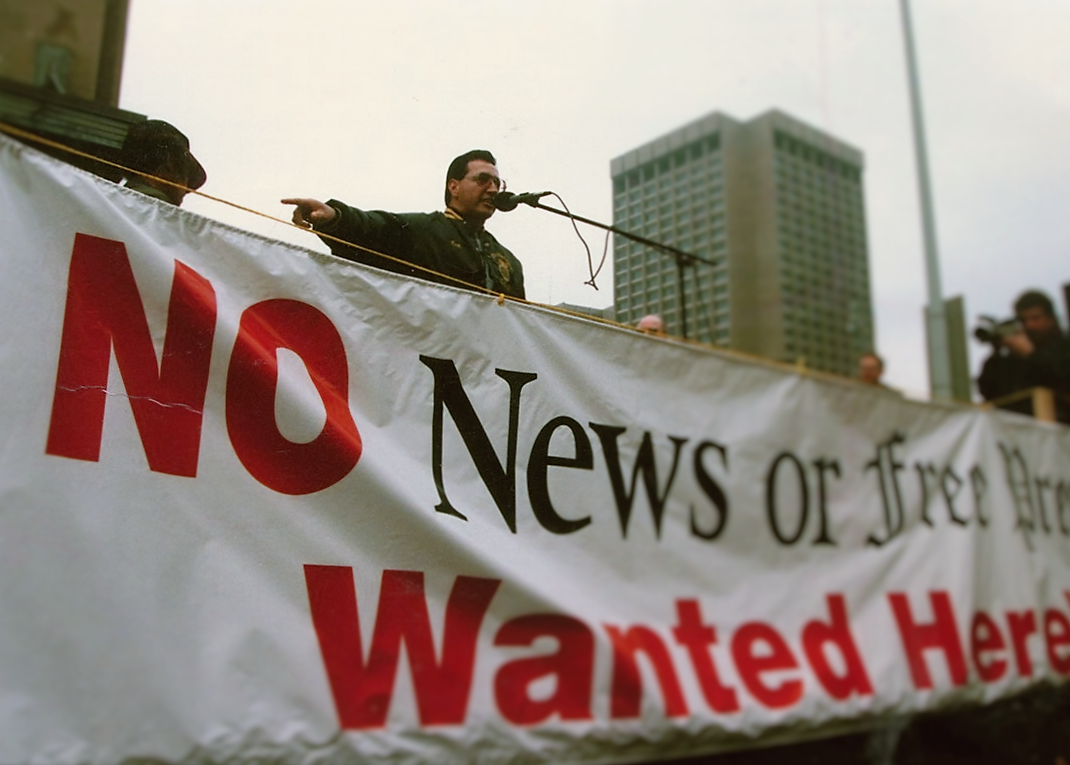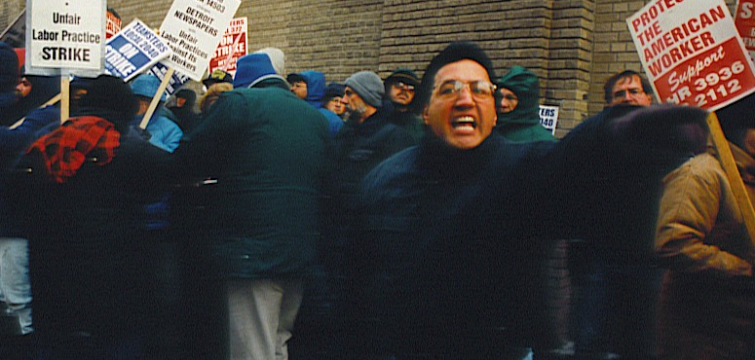As an organizing director, I ran many campaigns where workers destroyed company equipment and filed false EEOC and ULP charges againstmanagement. These normal, everyday people would now pursue any action to attack their employer or coworkers who didn’t fall in line. In extreme cases, they would even try to destroy the company that employed them.
My job was to instill the emotions (especially fear) in to these workers to achieve my goals. I created a common enemy in the form of themanagement and executives who provided these workers’ jobs and livelihood. Raw emotions are the steering wheel that a skilled manipulator uses to drive people into the deep commitment necessary to achieve desired results.
Now that I work to bridge the gap between workers and management to support the whole organization, I try to help my clients understand how to protect against becoming the victims and targets of these raw, untethered emotions and, instead, redirect their employees’ emotions into a positive direction. I can only provide truly effective assistanceif people understand the depths that unions can, and will, push your employees to and how critically important it is to avoid such pitfalls.
Always maintaining control of the message is paramount to winning or losing in any organizing campaign, contract negotiation, public support operation or employee motivation program. In my previous roles, I understood that, if I let the workers control the narrative, I would be unsuccessful, so my goal was to ensure that no employee could freelance or turn independent.
When I was a national organizing director, my organizing teams acrossthe country kept getting stonewalled by professional healthcare workerswho commonly expressed their disdain for an adversarial relationship with management. Their near-universally expressed views were that they were part of a “mission” towards the greater good and, while our overallorganizing numbers were strong, we needed to “build a better mousetrap”to catch healthcare professionals.
I found myself working with the AFL/CIO organizing department at the George Meany Labor College developing advanced strategies for healthcareand non-healthcare organizing. I pushed my concept of changing the narrative around healthcare unions so that professionals would seek us out. We took the healthcare message away from the industry by starting anational “grass-roots” challenge for hospitals to protect their patients. We also pushed hard for political and legal changes to healthcare institutions, like the “Safe Needle” campaign, RN to patient ratios, and many others to emphasize patient care.
Over the years, healthcare organizing has exploded, and more professionals than ever are saying they joined the union to ensure better care for their patients. Despite the idea being ridiculous on face value, unions have successfully indoctrinated this idea into healthcare workers’ minds.
We are seeing the same thing happening now with the increase in teacher strikes. The primary messages that teachers are using to try to get public support are 1) better student protections, 2) smaller class sizes, and 3) reform in education. Of course, teacher pay is always thrown into the mix. Any why not? Higher pay for teachers means more dues moneys in the unions’ coffers.
Selecting the most effective technique is always a balancing act between the carrot or stick. You must understand the mental makeup of the targeted employees and figuring out what will get them to react the way you want. Clearly, almost everyone who enters the healthcare and teaching professions knows that these are not fabulously well-paid positions; however, they honestly like helping people and want to make the world a better place. They deserve a good wage. The best way to motivate these groups to break their conscience is to demonize the opposition and make it appear that they are actively trying to harm those the workers want to help.
During my many strikes, I understood that keeping striking workers from crossing the picket line is paramount in maintaining the moral highground and winning the strike. During the Detroit Newspaper Strike, with about 2,600 workers from 5 international and 6 local unions, we arrived at our two-month strike anniversary with no end in sight. I began to hear grumbles and workers were crossing the picket line. To tryto plug the holes, I started a program where part of the members’ strike pay was contingent on participating in “get to know your neighbor” marches. I would take 200 to 300 strikers to walk up and down the street in front of the “scabs'” homes with signs and bullhorns. We brought along reporters and photographers and published the photos in the strike newspaper (The Detroit Sunday Journal), which published over 200 editions and saw circulation of 40,000-60,000 copies each week. (It eventually became one of the longest running temporary newspapers ever.)
We made sure that every striker attended at least one of these marches, to make sure that they all thought, “I hope this S.O.B. doesn’tdo this to me.” Family members, neighbors and police parked in the street: all observed the chaos. We put on a big show for a few hours each time. The shame and embarrassment heaped on members who crossed thepicket line (or as we called them “scabs”) was effective, and we saw a large decrease in the number of people crossing. Such shaming and othering (“scabs”) allowed us to even turn the workers against each other: pure tribalism at work.
The art of deception flourishes when you know your audience, those who you are trying to convince. You need to understand that, at our core, people are mostly tribal creatures. Whether we are part of a certain social class, ethnic or regional identity, the fact is that we are more likely to spend time, and enjoy time spent, with individuals who are like us and who enjoy the same things. It is part of our subconscious survival instincts. Tribal mentalities create an instant, subconscious rapport that can be conveyed without explicit verbal communication.
This is the core idea I used to drive actions when I was a union official, and it taps into very powerful emotions. I witnessed strikers from every walk of life fight police and replacement workers hand-to-hand in the streets of Detroit and the surrounding communities. These were all just regular working Joes trying to support their families. They were your neighbors, brothers and sisters, fellow church/club members and they were putting everything on the line becausethey felt they were part of something larger than themselves. They shared a common cause and belonged to a single tribe, which led them to reject their previous communities.
I remember receiving calls at all hours of the day and night from my organizers giving me updates. The organizers sometimes worked 12 hours or more without complaining because they felt part of a cause greater than themselves. In one state, we had three elections occurring within amatter of a couple of weeks. One of my organizers had to go into the hospital the next morning to undergo cancer surgery, but she still insisted on training casual organizer we pulled from organized units like the current campaigns’. She didn’t finish her training until after 9:00 PM and had to be in the hospital at 7:00 AM the following morning. This is tribal mentality in prime focus: the group always comes first!
It was common for the companies we were organizing to use catch phrases like “team members”, “our company family”, along with the rest we know so well, but the problem is that these were almost always just words. My teams turned them into the butts of jokes that were used by the workers against their “enemies”, management. We played on the workers’ natural instincts. We became part of their tribes by fitting inand making them comfortable with us. To do that, we had to take the time to get to know who we were dealing with and mirror them. We then took charge and directed their actions.
Here is a great quote that sums up this inherent trend towards tribal mentalities:
“A tribe is a group of people connected to one another, connected to aleader, and connected to an idea. For millions of years, human beings have been part of one tribe or another. A group needs only two things tobe a tribe: a shared interest and a way to communicate.”
— Tribes: We Need You to Lead Us, by Seth Godin
Tribal manipulation can be used for negative purposes or positive endeavors. It is not enough to simply regurgitate catch phrases that sound good, though; unions need their members to follow up their words with actions, and they frequently succeed by setting up a rival tribe intheir members’ minds.
Breaking free from the traditional tribal mentality takes a lot of work but is worth all of the effort. In the workplace, it creates an atmosphere of trust and fairness and makes the goals and objective of everyone collectively (the entire organization) something bigger than each individual that everyone can become a part of. Of course, this is yet another form of tribalism, but one that’s based on mutual respect, rather than competition. This is not a pie-in-the-sky dream, rather it’sa relatively simple path to a productive work environment that relies on well-documented human behavior.
I was a hardcore union official who refused to take prisoners and, while I held my positions in unions, I was strong in my beliefs. My attitude over those lost years in labor was that management was my enemy. My job was to beat them every day. I knew what worked and utilized these tools for my benefit.




